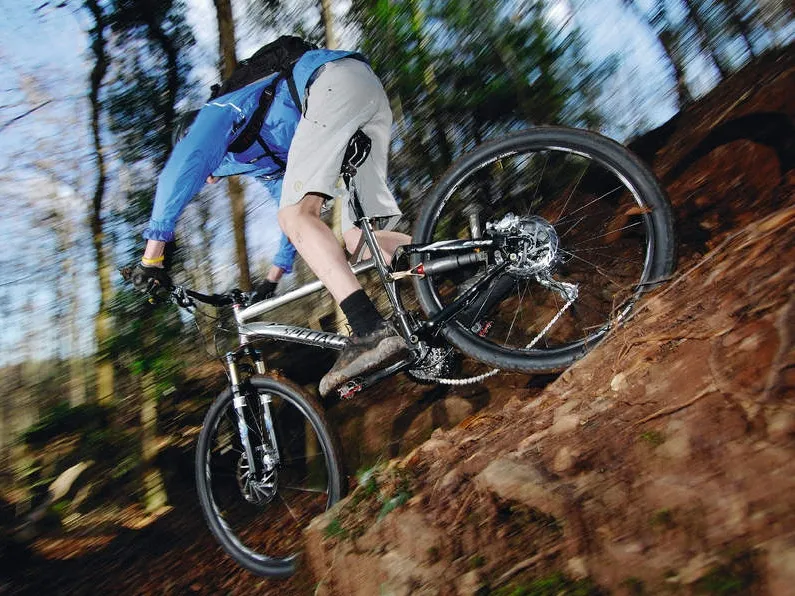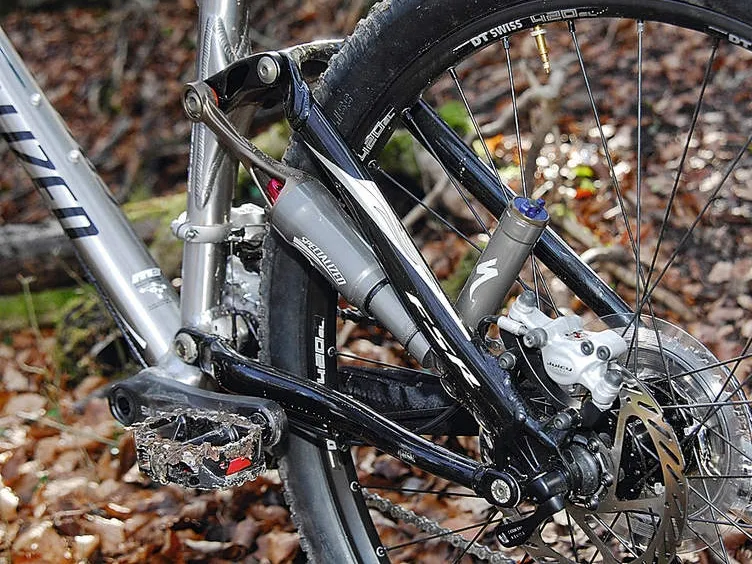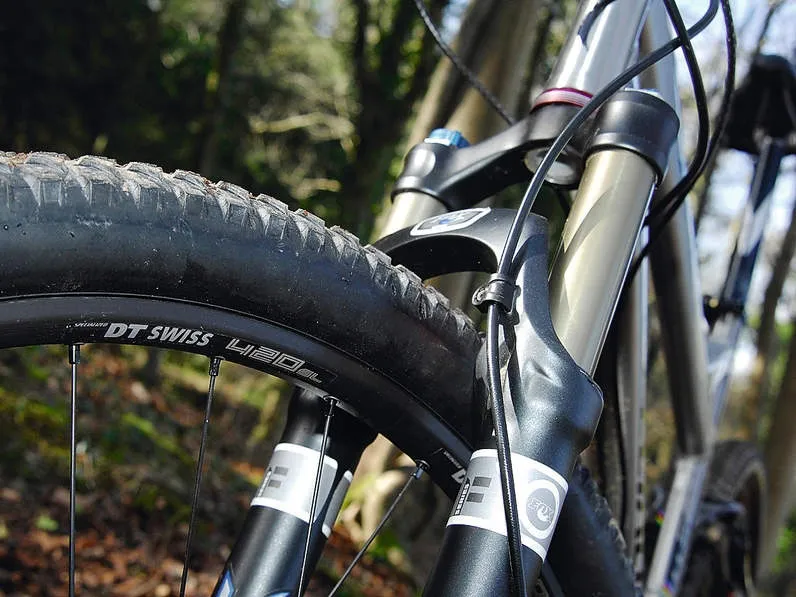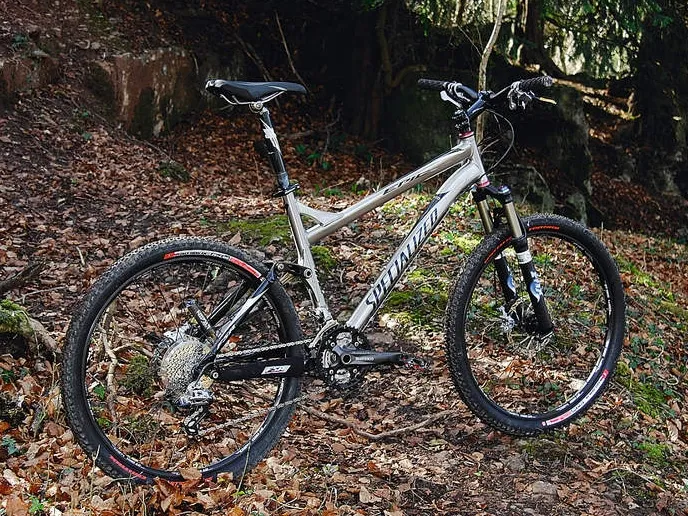The latest incarnation of Specialized's venerable, unique Epic race rig is a smoother, more widely applicable bike than ever.
The Epic Comp has a lightweight ride with well balanced handling. The broad pre-select range on the auto shock lockout lets you dial it in for your riding style and conditions. However, the big difference between hard-lock and squish-unlocked shock feel robs back end of responsiveness.
Nevertheless, this is a bike that's worth considering if its dual nature is handyfor you: it can swap from hard-kicking racer to smooth mile-eater at the twist of a dial
Ride & handling: softer edges than previous Epics but still a bit of a compromise
Having ridden Epics at various points through their development, our first surprise was how ‘normal’ the latest model felt. Before, there was always a clunkiness about the shock coming into play and then locking out again, often at the expense of rear pinch punctures or loss of traction.
The new Epic was much more open in its approach to kerbs, rocks and general trail use, though. A lot of this is because Specialized has now made it possible to dial out the Brain Fade lockout almost completely, so that as soon as you’re off-road it’s open and flowing smoothly 95 per cent of the time.
However – like the Mondraker Foxy and most other FSR-style bikes – once the shock is moving it has a distinctly mushy, squat-prone feel, unless you deliberately overpressure the shock (in which case you won’t get full travel).
The back wheel stays impressively connected, and the low bike weight always ensures decent acceleration, but there’s no obvious feedback or zip when you put the power down. In fact, put the power down really hard when the shock is open and there’s enough flex and squirm in the back to auto-shift across the gears.
Not exactly what you want from a race bike, and a contrast to the hammer-blow hardtail acceleration when the ‘Brain’ is locked out. Although it didn’t take us long to find a compromise between softness when we wanted and kick when we needed it, but ultimately it did always feel exactly that, though – a compromise.
Specialized has given the Epic a more general feel through the cockpit, rather than a raw race feel. It’s still a long bike rather than a short-wheelbase switchback fiend, but the decent width riser bar lets you push the excellent Fox front end through stuff.
It’s not a total trail tiller, but combined with the steep seat angle pushing the rider’s weight forward, it’s certainly enough to let you surf the fast tyres through corners beyond their natural limits without ending up in a heap.
Overall accuracy is slightly slurred by the flexible back end, though, and the rear shock gets spiky and starts to choke over bigger hits, which limits its natural appetite for aggressive descending.
Frame: Great details, unusual shock
Despite being around for so long, the Epic is still a unique frame and shock concept based entirely around automatic lockout ‘Brain’ shock. This uses an inertia valve in the vertical chamber right next to the rear wheel so that it gets knocked open by bumps hitting the rear wheel.
A preloadable spring on top of the metal inertia valve slug lets you adjust the amount of force needed to open the valve and the length it stays open (they call it Brain Fade).
The inertia valve concept is unique to Specialized (since Fox stopped making its Terra Logic/Trail Tune forks), but there are other ways to create a similar effect.
White Brothers uses an adjustable magnetic catch to hold compression valves shut on its ‘Magic’ forks. Any sort of adjustable low-speed compression damping (Pro Pedal, floodgate, Albert Select, SPV etc.) can also be used to keep suspension from moving on smoother surfaces. Specialized’s Brain definitely does it more dramatically than anything else, though.
The Epic shock sits underneath the offside seatstay so that the Brain chamber can connect directly to the base of the shock. The top end then attaches to the upper pivot axle using an offset anchor point.
The good news for racers is that there’s plenty of room for a conventional bottle mount. Even though it’s the most basic bike in the Epic line-up, the frame finishing demonstrates Specialized’s excellent attention to detail. Cable runs are tidy, mud clearance is workable with most tyres, and they’ve even etched all the correct torque loads for the bolts on the linkages.
Equipment: great fork, solid component pick
Specialized has done its usual excellent job with speccing the Epic. The Fox F100 fork is definitely the best short fork you'll find on a bike in this price range, with a clear control advantage once you push it through rough terrain.
The Shimano/SRAM kit is on par for the price rather than impressive, but it performs well as long as you don’t kick hard enough to ghost-shift the rear mech. The Shimano rear hub should last well, too.
The low-tread Fast Track tyres are a great match for the race/fast trail character of the bike – noticeably faster than the previous taller Fast Tracks, but running cleaner in muddy conditions, too.
The custom DT rims are just part of an extensive range of subtly tweaked Specialized-only kit, including a clever shimmed optional rise stem, lightened Avid brakes and the company’s own well-shaped cockpit and seating gear.
There’s no doubt that the neat colour coordination throughout the componentry will attract plenty of buyers, too.
Summary: best Epic yet, but still a compromise
This year’s Epic is the smoothest and most controlled we’ve ridden, with a low weight, good handling and good kit broadening its appeal far beyond the race track.
However, while the actual transition on the shock between locked and open is much smoother than before, there’s still a dramatic difference between the feel of the bike. That means at some point you’re going to have to come to an on/off compromise which you simply don’t have to make on the better suspension systems here.




